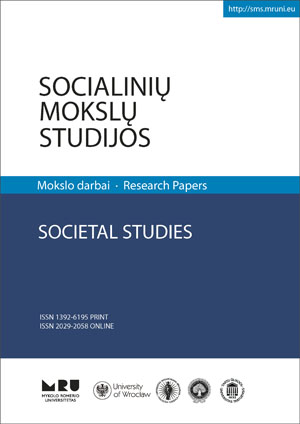UNIVERSITETO STUDENTŲ NUOMONĖ APIE ANTROSIOS KARTOS SAITYNO TECHNOLOGIJŲ NAUDOJIMĄ PROFESINĖS UŽSIENIO KALBOS STUDIJOSE. ŽVALGOMASIS TYRIMAS.
UNIVERSITY STUDENTS’ ATTITUDES TOWARDS THE USAGE OF WEB 2.0 TOOLS FOR LEARNING ESP. A PRELIMINARY INVESTIGATION
Author(s): Eglė Selevičienė, Nijolė BurkšaitienėSubject(s): Language and Literature Studies, Essay|Book Review |Scientific Life
Published by: Mykolas Romeris University
Keywords: Technology Acceptance Model (TAM); Web 2.0 tools; foreign language teaching and learning; English for specific purposes (ESP)
Summary/Abstract: Currently, there is much debate concerning Web 2.0 technologies and the changes they have brought to education. Web 2.0 tools are successfully being used in foreign language learning contexts, however, students can exhibit a variety of behaviours when confronted with them; therefore, it is important to determine their attitudes before planning any educational intervention. This study rests on Technology Acceptance Model (TAM), the most commonly applied theory for describing individual user acceptance of information systems. Six major variables of TAM (awareness, perceived usefulness, perceived ease of use, attitudes towards use, behavioural intention and actual system usage) and their relationship with ESP students’ background factors are discussed in the study. The study resulted in establishing that the students’ ability to use Web 2.0tools was the only individual factor that had a positive relationship with their attitude, intention to use, actual system usage and awareness of Web 2.0 tools meant for learning English for Specifi c Purposes (ESP) at the university; therefore, this should be taken into consideration before integrating Web 2.0 tools into ESP curriculum and/ or planning any educational intervention.
Journal: Socialinių mokslų studijos
- Issue Year: 7/2015
- Issue No: 2
- Page Range: 270-291
- Page Count: 22
- Language: English

